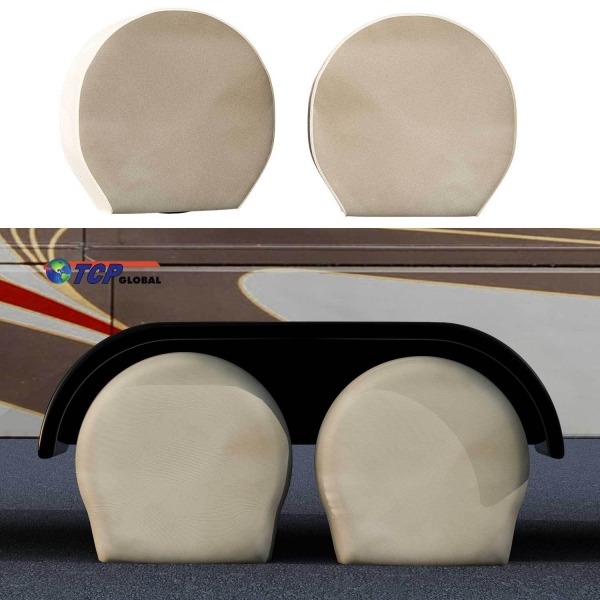Welcome to Crossing Creeks RV Resort & Spa in the heart of iconic Blairsville
Many factors that influence tire replacement on an RV are identical to those for other vehicles, but one stands out as decidedly more relevant to RVs: tire age.
Why? RV tires may deteriorate before the tread wears out if they’re old. RVs travel fewer miles than daily drivers for most people, so the tread often remains high, even after years of use. Sure, some RV owners—especially nomads who live on the road—drive 10,000 miles a year. But the average RV owner drives less than 5,000 miles yearly, according to Guaranty RV Super Centers, an Oregon-based chain of RV dealers.
A 5-year-old tire may not show much wear at 25,000 miles, but what kind of shape is it in? It’s possible that a tire with half its tread will begin to show sidewall cracks, largely from the ultraviolet rays in sunlight and from atmospheric ozone, but also from the stress of heavy loads, the heat from high speed, and improper maintenance and storage.
Check the manufacturing date on each sidewall—the last (right-hand) four numbers after the DOT marking. The first two of those numbers are the month and the last two, the year. For example, a tire stamped “0110” was made in January 2010. Michelin recommends having the tires checked when they’re 5 years old.
By the seventh year, or if signs of non-tread wear show before then, consider getting new shoes. If tires check out, keep running them. When replacing just two tires, place them on the same axle at the rear.
Here are steps to make your tires last:
Maintain Proper Pressure
Go by the tire manufacturer’s inflation recommendation. Don’t overload your tires, and just as importantly, don’t underinflate. Goodyear says every pound of under-inflation decreases a tire’s ability to carry 20 to 30 pounds of payload. Goodyear recommends checking pressure when tires are cold, before and after each trip (even short ones), when TPMS indicates a problem, and monthly during storage.
Don’t Overload Your RV
An RV that’s too heavy unduly stresses tires. It also can degrade handling. Distribute contents as evenly as possible to avoid stressing just one tire. Weigh your RV while it’s loaded (and with full tanks) on a truck scale.
Rotate Tires
Tires wear more evenly and last longer as a set if they’re rotated. Including your spare in the rotation ensures that it won’t age beyond its useful lifespan. Check your RV owner’s manual, but as a guide, rotate yearly.
Keep Tires Balanced
Tires should be balanced when new or rotated to the other side. Unbalanced tires will ride roughly as they bounce.
Store Your RV Properly
If possible, store indoors in a cool, dry place. Outdoors, try to find an area shielded at least part of the day from sunlight. Unload your camper. Inflate the tires to 25 percent over the recommended maximum. Clean the tires with soap and water, but avoid sealants and dressings. Place the RV on blocks if possible. Shield the tires from sunlight with covers. It may be helpful to park on a layer of plastic between the tires and pavement. To avoid flat-spotting, move the RV every three months but not in cold weather. If tires are stored indoors, keep them away from ozone-generating heat sources.
Replacing Tires
Buy tires similar or identical to those already on the RV. Match the size and load ratings of original tires. On trailers, never mix increasingly available radials with bias ply, which are being phased out. You can use bias trailer tires even if your tow vehicle has radials.
Photo Credit: tcpglobal.com
Leave a comment
Make sure you enter all the required information, indicated by an asterisk (*). HTML code is not allowed.
